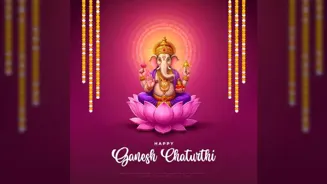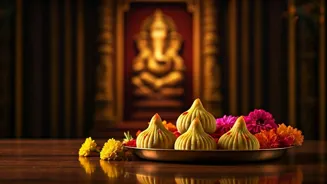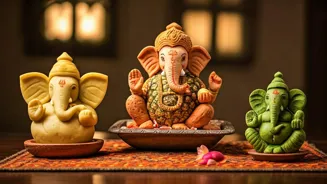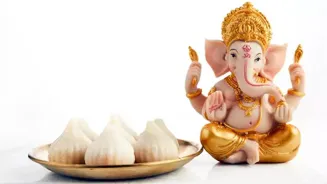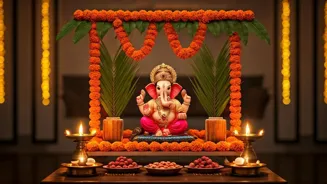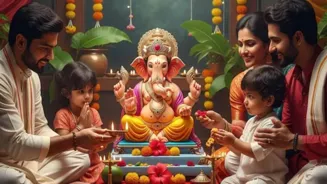Move over, modaks! Let’s take a delightful detour into some charming and almost-forgotten traditions that make Ganesh Chaturthi so much more than a sweet
feast.
We all know the big-ticket items for Ganesh Chaturthi: the grand idols, the infectious energy of the aartis, and, of course, the heavenly, steam-filled modaks that we'd probably trade a kingdom for. But tucked away in the memories of our grandparents and in the quiet rituals of traditional households are some beautiful practices that don’t always make it to the Instagram feed.
Let’s rediscover them together, shall we?
The Green Carpet Welcome: Patri Puja
Before the idol even arrives, many homes, especially in Maharashtra and parts of South India, perform what’s called Patri Puja or Navanedya. This isn’t about fancy decorations; it’s about nature’s own bounty.
(@mad_gardener_/Instagram)
Imagine this: a collection of 21 different types of leaves, blades of grass, and medicinal plants are carefully gathered. Each one is symbolic, believed to be beloved by Ganesha or to possess healing properties that they transfer to the devotee through the act of worship. You have the Durva grass (three-bladed, for good luck), the deep red Mayflower (Gulmohar), and even the humble Tulsi.
The ritual involves washing these leaves and offering them to Lord Ganesha. It’s a beautiful, earthy reminder of our deep-rooted connection with nature, a quiet moment of gratitude before the festivities kick off. Isn't it amazing how the simplest things hold the deepest meanings?
The First Morsel: A Culinary Ritual
Okay, we talked about modaks, but have you heard about the first modak? There’s a sweet little tradition where 21 modaks are offered to the deity. But here’s the catch: the very first one, known as the Aadhya Modak, is considered the most sacred.
(@welcomehotel_Ahmedabad/Instagram)
It’s often offered in a specific way, sometimes placed right on the idol’s trunk or held near it during the aarti. The belief is that this first modak absorbs the primary blessings. This isn’t just food; it’s prasad in its most potent form. The act of making and offering it is filled with so much intention and love, making that first bite truly divine. It makes you think, doesn't it? Maybe the secret ingredient really is devotion.
More Than a Goodnight Story: Putting Ganesha to Bed
In many traditional households, especially those with a sthaapna (a permanent idol), Ganesha is treated like a beloved child visiting home. This means the family doesn’t just say goodnight and turn off the lights.
(@__.anmol.__96k_/Instagram)
Every evening during the festival, a ritual called Shayan Aarti is performed. Soft, melodic hymns are sung, a gentle aarti is circulated, and the idol is literally “put to sleep.” This might involve turning it to one side, covering it with a light cloth, or even placing a tiny pillow nearby! It’s a wonderfully intimate and personal tradition that transforms worship from a formal ceremony into an act of tender, familial care.
The Silent Goodbye: Eco-Consciousness Before It Was Cool
While the grand visarjan (immersion) processions are a sight to behold, a quieter, more personal tradition exists. In many families, after the main rituals, the nirmalya - the leftover flowers, leaves, and offerings from the day’s puja - is not just discarded.
It is collected with respect and often immersed in a nearby river or lake, or even dissolved in the soil at home. Some communities even have a specific nirmalya visarjan ritual. This practice shows a deep-seated cultural ethos of environmental consciousness, of returning what we took from nature back to it with gratitude. It was sustainability, way before it became a trendy hashtag.
So this Ganesh Chaturthi, as you relish that delicious modak, take a moment to remember these beautiful, layered traditions. Maybe you can even bring one back to life in your own home
